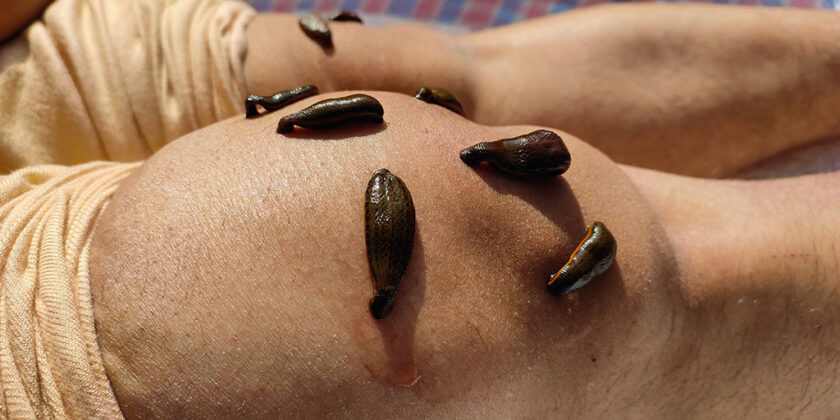Blog Reconstructive Microsurgery Revolutionizing Tissue Flap Surgery with Leech Therapy: What You Need to Know
Reconstructive Microsurgery Enchanted Tissue Flap Surgery with Leech Therapy: What You Need to Know
Reconstructive microsurgery is increasingly being employed to restore function and look following trauma, burns or birth injuries. Perhaps the most groundbreaking innovation in this space is the introduction of leech therapy that is transforming the rate of success of tissue flap procedures. Leech therapy allows tissues to thrive and heal in ways they had never before experienced. Here’s a closer look at how leech therapy is altering reconstructive microsurgery.
What is Tissue Flap Surgery?
Tissue flap surgery entails moving healthy tissue from one region to another in order to replace damaged or lost tissue. It is used extensively to cure severe burns, make faces from cancer surgery, and treat wounds that are hard to heal. The key to successful tissue flap surgery is to give the new tissue a good supply of blood. Without the right circulation, the tissue could become dead and the operation would be ineffective.
How Leech Therapy Enables Tissue Flap Surgery.
Leech therapy is being used to revolutionise reconstructive microsurgery. When administered following tissue flap surgery, medicinal leeches provide a multitude of advantages that increase the chances of a successful graft. Here’s how:
Improved Blood Flow and Circulation
Leech therapy for tissue flap surgery serves primarily to increase blood flow to the newly grafted tissue. Pharmaceutical leeches release chemicals that act as natural anticoagulants to prevent blood clots and to allow blood to flow through the grafted tissue. This is particularly critical when the blood vessels in the grafted tissue are tiny and weak, as they are susceptible to clotting.
Reduced Venous Congestion
Once a tissue flap is transplanted, venous congestion – blood clots that form in the grafted area – can result in tissue death. Leech therapy relieves this congestion by removing excess blood, providing oxygen to the grafted tissue and improving its survival prospects.
Promotion of Healing and Regeneration
Leech saliva is rich in enzymes and growth factors that encourage tissue regeneration. These active compounds induce the formation of new blood vessels (angiogenesis), which is necessary for grafted tissue to blend into the surrounding tissues. The result is faster healing and improved functional performance.
Pain and Inflammation Reduction
Leech treatment reduces pain and swelling around the grafted site. This is because leech saliva has anti-inflammatory qualities that can reduce discomfort and make recovery a little easier.
Improved Cosmetic Results
Through leech therapy, tissue flap surgery may lead to improved cosmetic results. By enhancing blood circulation and graft healing, leech therapy helps to minimise scarring and promote smoother, more natural-looking skin reconstruction.
What Happens During a Leech Therapy Session?
Leech therapy usually happens a few days or weeks after tissue flap surgery. Here’s what you can expect from a session:
Use of Medicinal Leeches: Professionals will gently apply medicinal leeches on the wound. Leeches attach to the skin and start feeding on the blood, thereby also releasing antibiotics into the surrounding tissue.
Duration: A session takes approximately 30 to 60 minutes, depending on the issue being treated and how many leeches are needed.
Aftercare: When the leeches have stopped feeding, they are removed carefully and the treatment area cleaned. The area can be monitored for signs of infection or problems.
Multiple Sessions: Depending on the extent of the surgery and how far the patient has recovered, leech therapy may need multiple sessions to provide the desired outcome.
Leech Therapy is Beneficial in Reconstructive Microsurgery.
Increased Graft Survival: Leech therapy drastically enhances the chances that a tissue flap will survive and integrate successfully into its new location.
Accelerated Healing: By promoting circulation and reducing venous congestion, leech therapy accelerates healing and reduces the chances of complications.
Relatively Low Reoperations: Leech therapy reduces tissue death and other complications that might warrant further surgery.
Less Scarring: Proper healing and blood flow can result in fewer scars and enhanced aesthetics.
How Is Leech Therapy Used in Tissue Flap Surgery?
1. Tissue flap surgery: Is leech therapy safe?
In fact, when administered by a licensed doctor under strict clinical conditions, leech therapy can be a very safe and efficient way to increase the success rate of tissue flap surgeries.
2. How long does a leech therapy session last?
The sessions generally last between 30 and 60 minutes each, depending on the area being worked on and the condition of the patient.
3. Does leech therapy have any adverse effects?
The most common side effects include a slight redness or swelling around the bite site. Such side effects are usually transient and fade away quickly. In very occasional circumstances, an infection might occur, but that can be avoided by proper handling.
4. How many leech therapy sessions do I require?
It takes several sessions, depending on the extent of the surgery and the recovery. Some patients will require several sessions over the course of weeks to ensure that the graft survives and heals.
5. Do all tissue flap surgeries involve leech therapy?
Leech therapy is especially helpful in patients who have congested veins or inadequate blood supply to the grafted tissue. The surgeon will decide whether leech therapy is suitable for your particular procedure.
6. Does leech therapy hurt?
Unlike most other species of leech, a medicinal leech bite is normally painless, as the leech’s saliva is anaesthetising. The patient often describes the experience as mild and tolerable.
Conclusion
Leech therapy is a game changer in reconstructive microsurgery, particularly in tissue flap surgery. Leech therapy, which increased blood flow, decreased venous congestedness and made the wound heal faster, has notably improved the outcomes of these sophisticated treatments. If you’re going through reconstructive surgery, speak to your surgeon about leech therapy to find out how it might enhance your healing process and ensure the best possible outcome.



